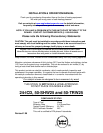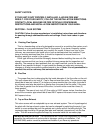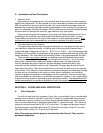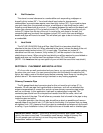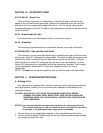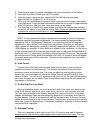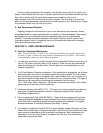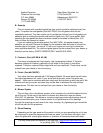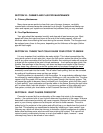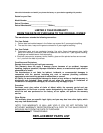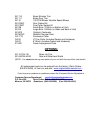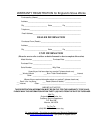
B. Wall Protection
This stove’s normal clearance to a combustible such as paneling, wallpaper or
drywall is thirty inches (30”). You should check local codes for clearances to
combustibles, as some areas require more than thirty inches (30”). If you need to place
your unit closer than the required minimum, a wall board or heat shield can be used.
Installing a wall board with a one inch (1”) air space (between the wall and the board) will
reduce your clearance by 2/3 or to twelve inches (12”). The wallboard must be only six
inches (6”) higher than the top of the unit. In moving the unit closer to the wall, the
connector pipe may be closer than eighteen inches (18”) and in this case shielded or
double wall pipe will have to be used. This will allow your pipe to be six inches (6”) from
a combustible.
C. Heat Shield
The AC-IHS (SH-HS25)
Side and Rear Heat Shield is a two-piece shield that
attaches to the rear of the unit. When attached to the stove it covers the back of the unit
and approximately twelve inches (12”) on each side. This allows six inches (6”)
clearance from the rear; however, thirty inches (30”) will be required in the area the
shield does not cover. When using the heat shield you will be required to use shielded or
double wall pipe, as it will be less than eighteen inches (18”) from the wall.
(NOTE: You must use the top vent option of your unit with the use of this heat shield.)
SECTION III: PLACEMENT AND INSTALLATION
All of our units are well constructed and very heavy, so you must take caution getting
the stove into your home. You can remove the door and the firebrick to make the unit
lighter, but make a note of the brick layout before removing them. Never try handling this
product alone!!! We recommend using a handcart on any heating appliance.
Chimney Connector Pipe
The 24-gauge black steel connector pipe for this unit must be six inches (6”) in
diameter. Do not use pipe that is galvanized or aluminum, as it will not withstand the
extreme temperatures of a wood fire, and do not use chimney connector pipe (single
wall) as a chimney. In this application, triple wall or packed pipe is required. The
connector pipe should have the crimped end inserted into the flue collar, which will
reverse the rest of the pipe. This will allow any creosote that is formed in the pipe to stay
inside the pipe and stove.
For proper operation, the chimney pipe should be as short as possible and have an
upward slope of one-fourth inch (1/4”) per foot to the thimble. It is required that you keep
an eighteen-inch (18”) clearance from your pipe to combustible surfaces such as the wall
or ceiling. If your installation is less, it will require the use of double wall or shielded pipe.
IMPORTANT SAFETY NOTE: If the unit or chimney connector pipe “glows” red (or
white), the stove is over-fired. This condition could cause a house or chimney fire.
Do not operate your unit too hot, or over-firing may result (see “Operating
Instructions” section of manual).



